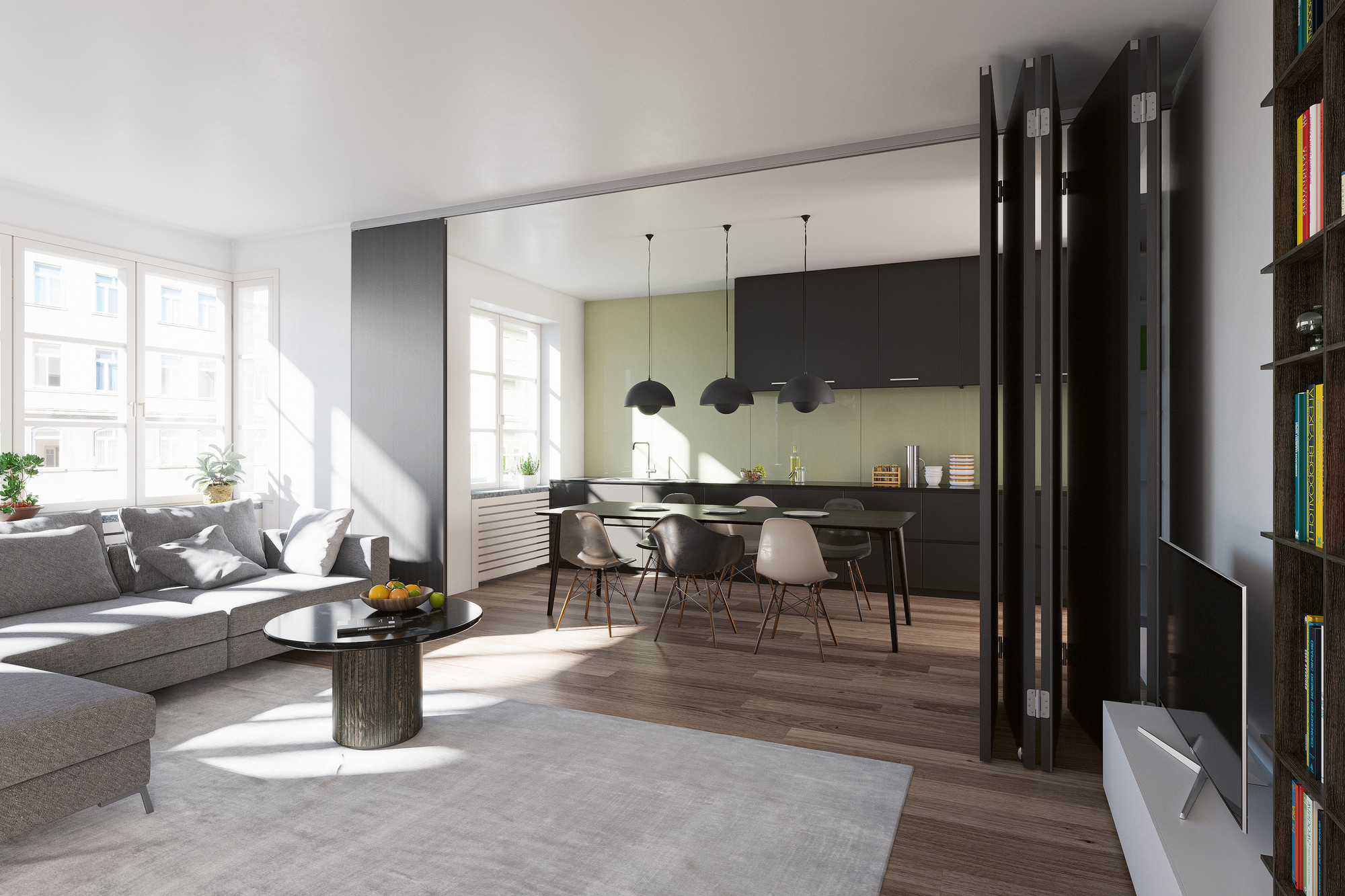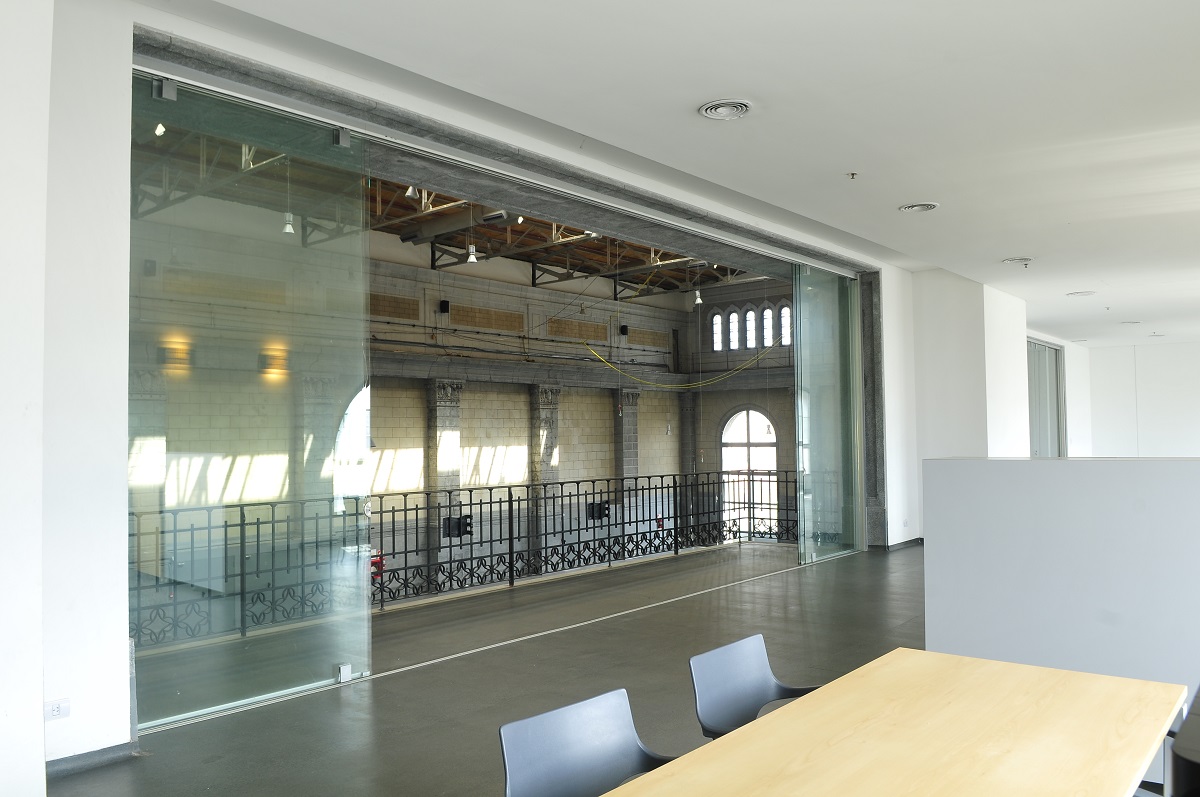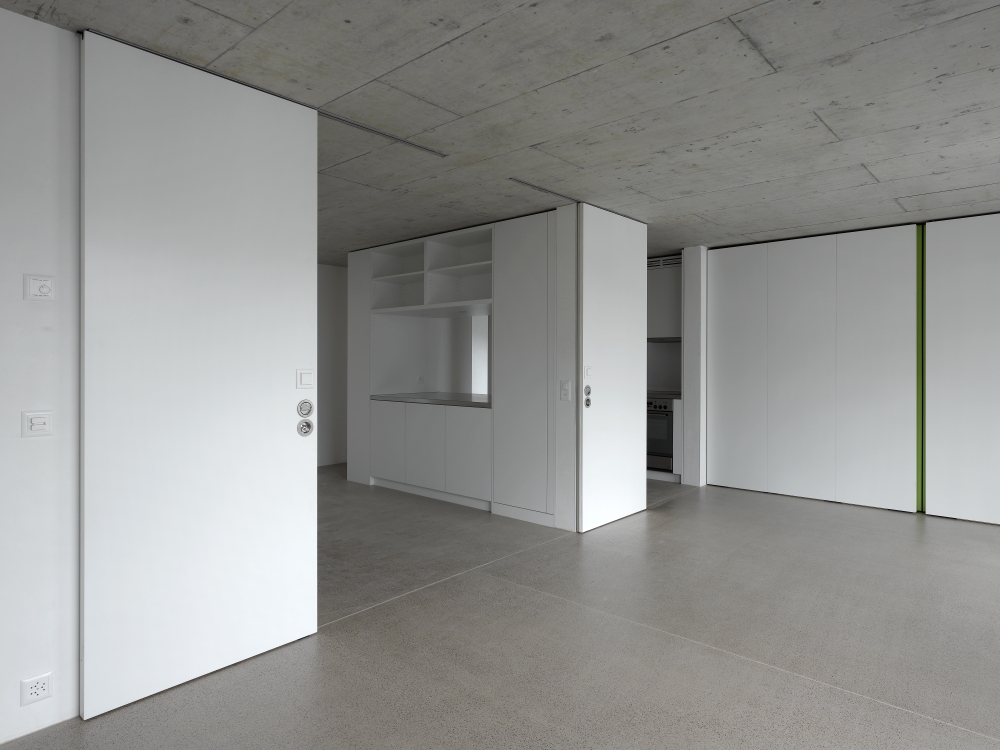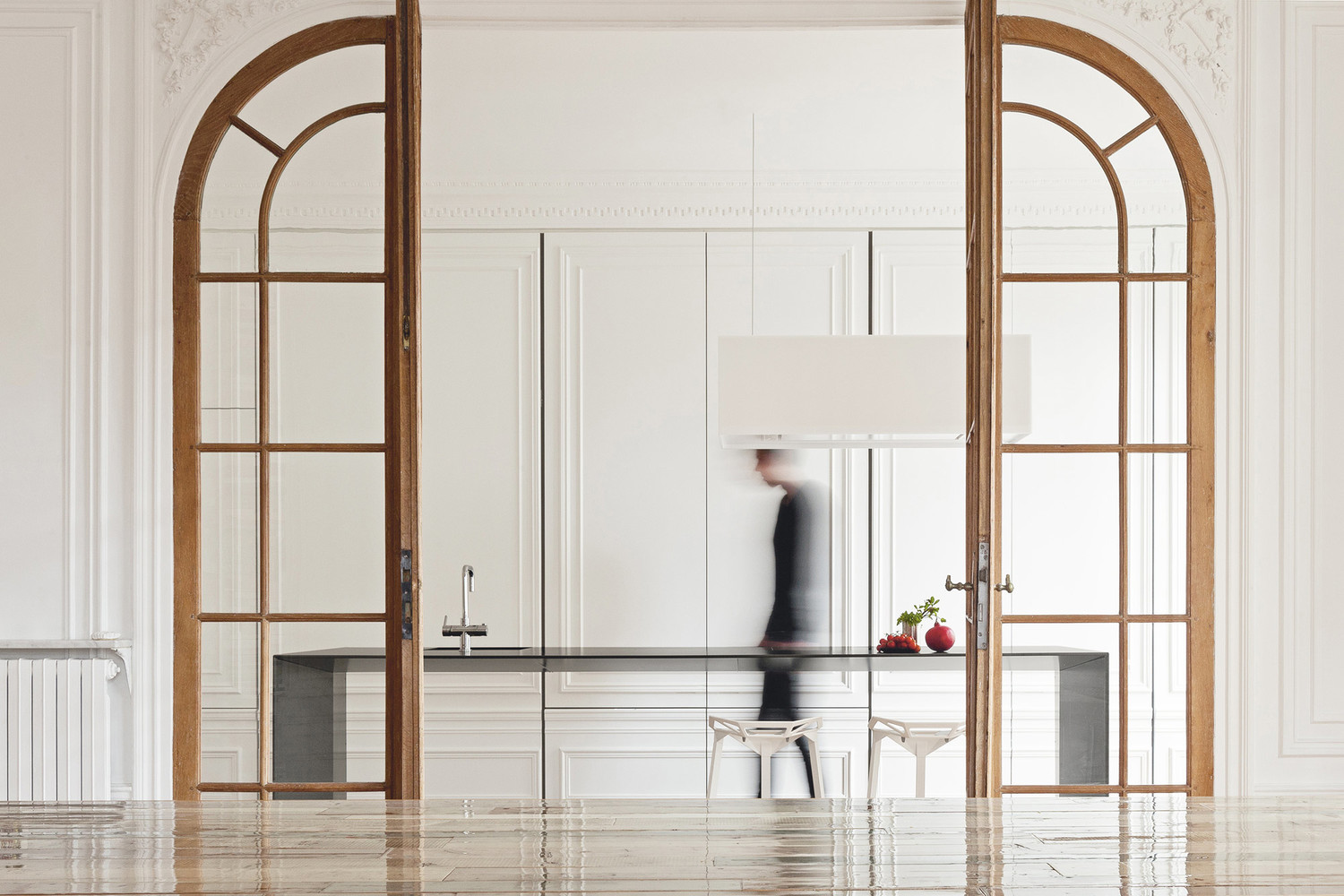Multi-functional instead of fixed: Multi-dimensional life in fluid spaces
How can you resolve rigid spatial structures?
We live in turbulent times: The boundaries between working and living, and also between public and private, are increasingly blurring. That calls for “as well as” living spaces. Important room elements must be able to adapt according to the rhythm of life of its users. Sliding solutions set the stage for this. A few simple steps are all it takes – and the perspectives in the room shift.

Functional, aesthetic and flexible
Folding sliding walls are flexible room dividers that organise the office into units of different sizes according to requirements.
Read more
Flexible living spaces
Because so many people have spent more time at home in recent months they are now more demanding when it comes to their living space. And yet, apartments are getting smaller and smaller, with increased density. We spoke with Dominique Salathé, professor of architecture at the University of Applied Sciences and Arts Northwestern Switzerland and owner of Salathé Architekten Basel, about how these two trends can be reconciled and what the future holds for open-plan living spaces.
Read the article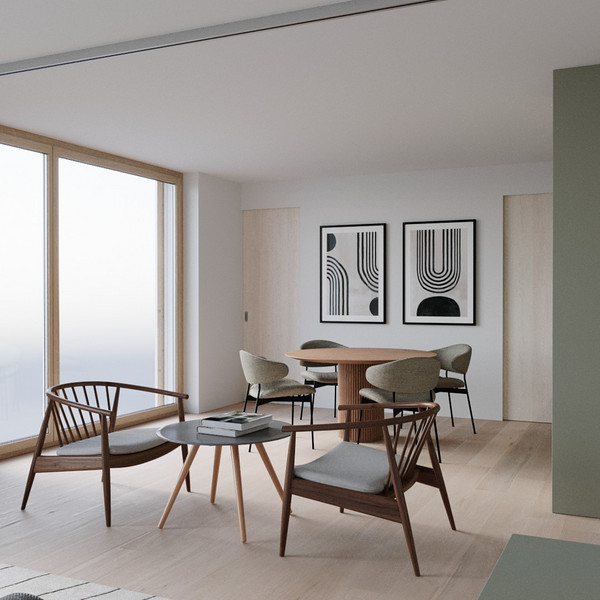
Little space, lots of possibilities
Flexible solutions allow you to make the best of even a tiny apartment. As is shown in our fictional example with Kim and David. They are representative of many young couples who have fulfilled their dream of owning their own home. 58-square meters—that’s their little paradise.
Discover the apartment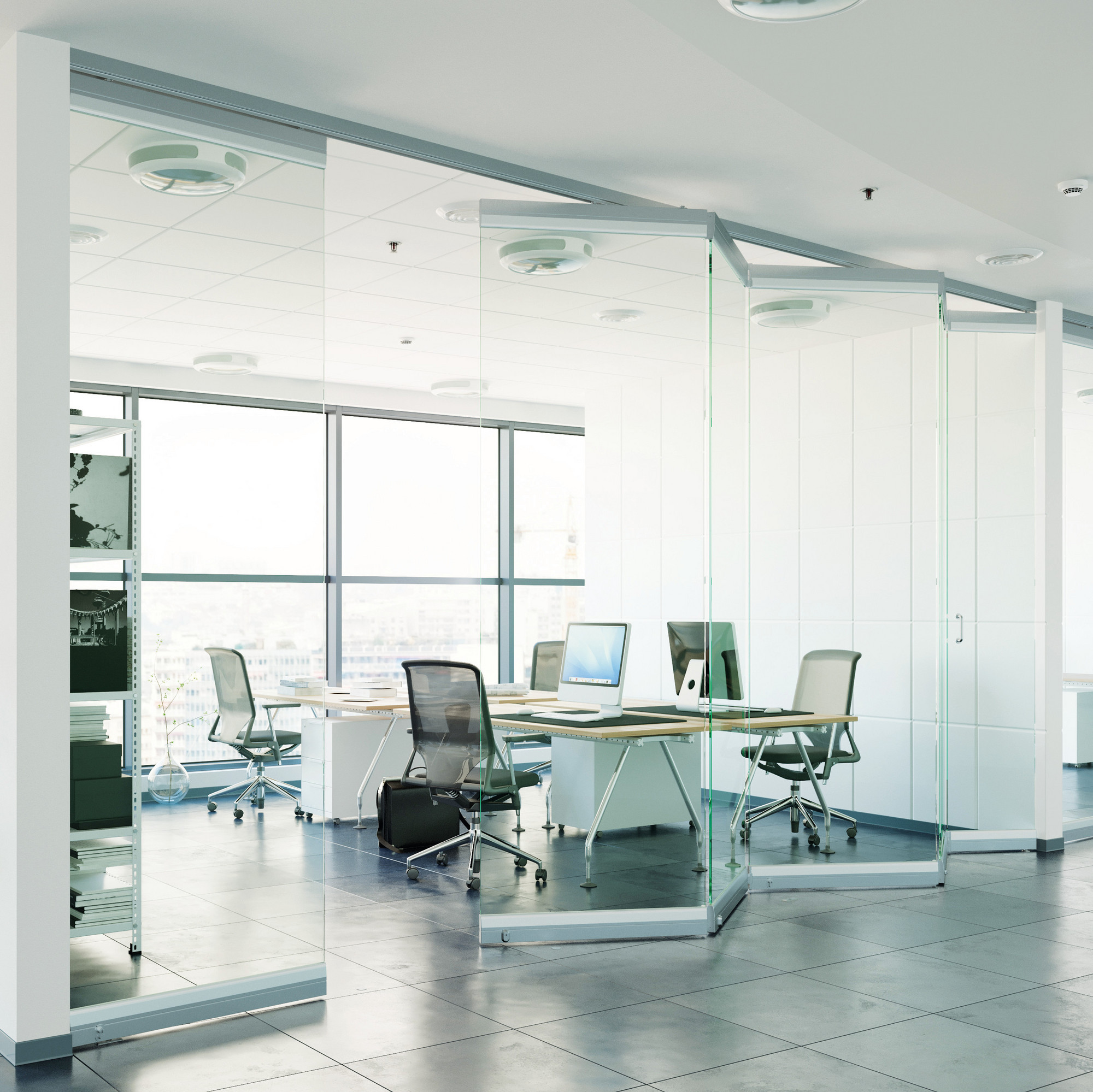
Rethinking rooms with mobile partitions
Movable partitions offer many advantages. They create privacy in open-plan offices and help you get the most out of a small apartment. They make spaces customizable and versatile As a technical consultant at Hawa Sliding Solutions, Bruno Grossrieder has the best solution for every situation.
Read interview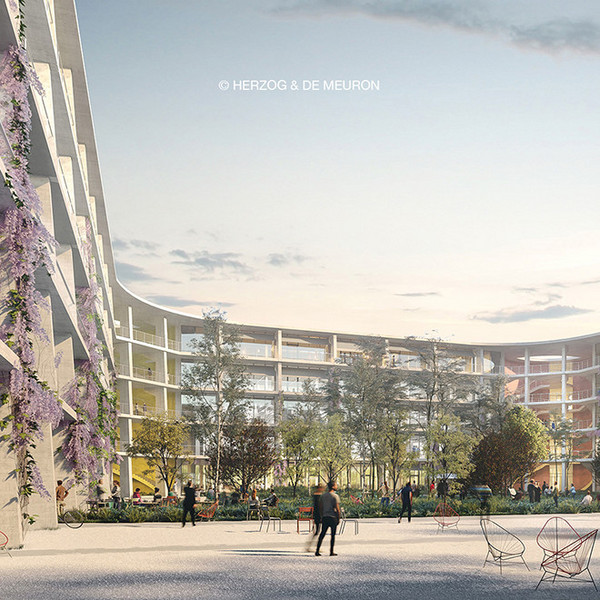
Every workspace requires an idea
Senn, the multi-award-winning real estate development firm from St. Gallen in Switzerland, has made it their mission to create people-friendly and stimulating work environments. Gaby Senn, interior designer and sales manager, knows that sustainable agile working methods require flexible, convertible office spaces.
Read moreInterior architecture: Trends that make flexibility the default
So far, every pandemic has had an impact on architecture. For example, we “owe” our modern sewerage system not least to cholera. How is Covid-19 changing our living spaces? In short: They are becoming more flexible.
The term stands for the merging of the home with the office. At the same time, the word “hope” resonates, as the German Future Institute explains. The interior design should promote productivity at home and at the same time create a feeling of well-being. Thus, the hoffice goes beyond the home office. This places new demands on the room layout. Sliding and folding solutions could create room to move.
The latest figures from the real estate market indicate: Large living spaces are increasingly in demand again in the face of Covid-19. However, they are rarely found, partly because the prices per square meter in the centers are high. In order to cope with the increased demands (office, handicraft room, fitness and game room are part of the list of requirements) in your own four walls, larger space miracles are necessary. There is no way around flexible structures.
While families dream of a country home away from the city, the trend towards small apartments continues. Why? Social change continues. For example, a compact living space is just as suited for a digital nomad as it is for a single mother whose children have left the nest. But as small as the living space is: There should be as much living comfort as possible.
No matter which company you approach: you will not escape agile work processes. It is just as certain, however, that nimble employees need a flexible environment. Is it now time for coffee, brainstorming, or maximum focus? The work landscape has to be able to adapt individually “in the flow”.
“Tell me how you live and I’ll tell you who you are,” is a bon mot in the interior design scene. Since
Covid-19, it is truer than ever: People are discovering the home as an individual playing field.
Everyone maintains their lifestyle, their quirks, which the furnishings reflect. Instead of going out, you
invite friends and family over. But not everybody has a lot of space to let off steam. A room must
therefore meet ever more diverse requirements. The home of the future should be modular. Static
boundaries are likely to become a relic.
Moveable partition walls for flexible room structures
“As well as” living spaces that can be adapted to the rhythm of life of users can be easily realized thanks to mobile partitions. With a few flicks of the wrist, living and working spaces can be reorganized and new possibilities created. Our hardware systems for sliding and folding sliding walls enable individual solutions.
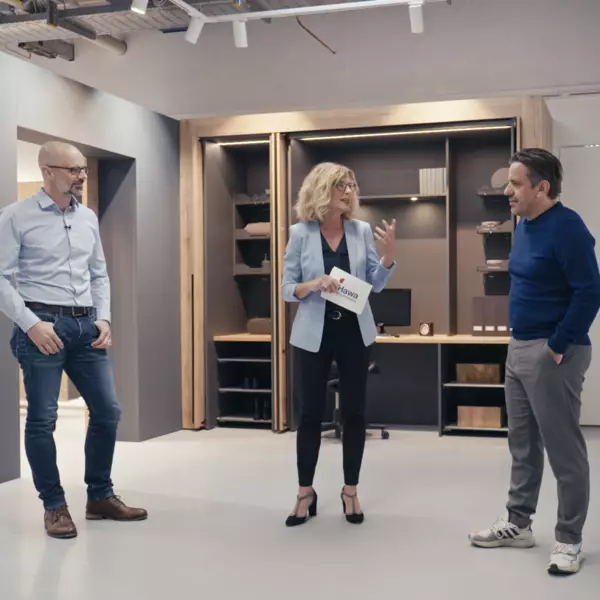
Expert meeting: This is how we will live and work tomorrow
Raphael Gielgen, the trend scout of furniture manufacturer Vitra, visits Markus Föllmi, the innovation director of Hawa Sliding Solutions, in the development laboratory. Experience the meeting of smart minds and find out how you can track down megatrends – and which developments are turning our living and working spaces upside down.
Watch interview
Agile working in a flexible office
What does the management magic word of the hour mean? In plain English, agility means: Even large teams have to work flexibly and dynamically – in order to be able to change direction quickly if necessary. It goes without saying that this is only possible in agile spaces. The future belongs to flexible floor plans with easily movable elements.
To Hawa Solution City